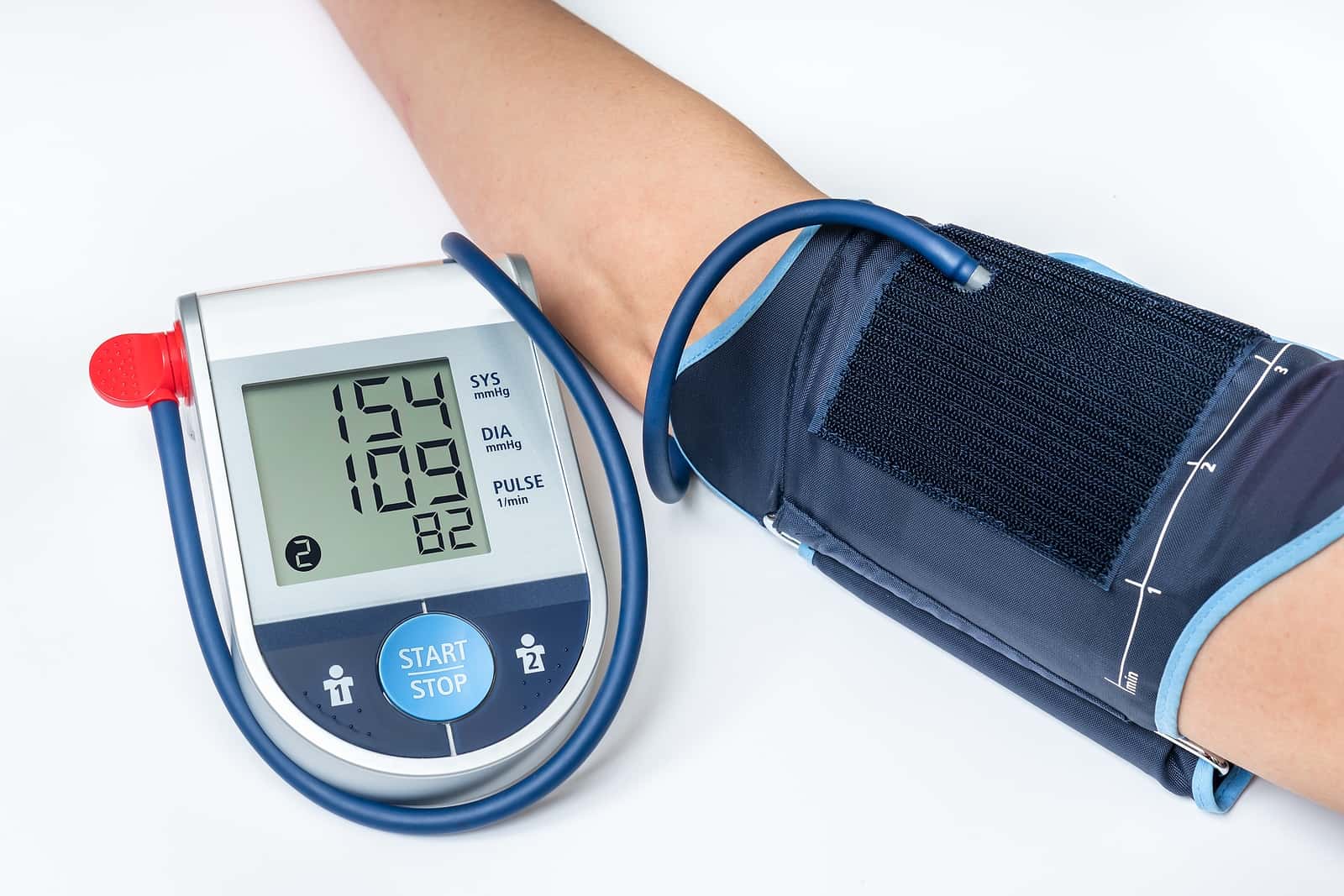
High blood pressure is an important risk factor for both stroke and heart disease. But how do you know when your blood pressure is high? Hypertension has no reliable symptoms. It is simply a measurement on a blood pressure device. For years, doctors relied on the measurements they took in the clinic and paid little attention to the patient’s home readings. Now, however, blood pressure monitors have become portable and convenient enough to make home monitoring easy.
Do You Have a Blood Pressure Monitor at Home?
Many health care professionals encourage people with hypertension to monitor their blood pressure at home. A new study reports that fewer than half of the hypertensive individuals surveyed actually used a home monitor on a regular basis (JAMA Network Open, Sep. 14, 2022). The online poll included more than 2,000 adults between 50 and 80 years old. Some of these people have been diagnosed with congestive heart failure, chronic kidney disease, stroke, diabetes or coronary heart disease, conditions that are related to blood pressure.
Other research has shown that people who monitor their own pressure at home tend to control it more effectively. In this survey, more than half of the respondents said they own a monitor, but some of them said they rarely or never use it. Approximately 51 percent of people with hypertension said they check it regularly through home monitoring. About half don’t share their readings with their health care provider. The investigators recommend developing protocols for home blood pressure monitoring, including frequency, and urge patients to share readings with their clinicians.
Does Home Monitoring Help People Control Blood Pressure?
Many Americans with hypertension don’t have it under good control. Measuring blood pressure at home can give people data about how well or poorly they are doing in those efforts. Recent home blood pressure monitors have the capability of connecting via Bluetooth to smartphones for tracking, graphing and sharing data. Do these technological innovations make a difference?
Scientists at UCSF selected 2100 middle-aged people from 23 health care systems (JAMA Internal Medicine, Aug. 15, 2022). Half were provided with a standard blood pressure machine, while the other half got Bluetooth enabled devices.
Both Groups Lowered Their Blood Pressure:
After six months, the results were in: there was no difference in blood pressure between the two groups. But while the authors presented this as a negative result, we think instead that it is positive. After all, both groups of volunteers reduced their average systolic blood pressure by more than 10.5 points (mm of mercury). When an anti-hypertensive medication does that, we call it a win. The bottom line: home monitoring of blood pressure makes sense, and you don’t need fancy equipment to make it work.
Home Monitoring for White Coat Hypertension:
Sometimes people with blood pressure that runs high in the doctor’s office have fairly normal blood pressure at other times. We call this “white coat hypertension,” and it is fairly common. Could home monitoring make a difference?
When blood pressure is measured on various devices, conscientious health care providers notice differences (Drawz, Current Hypertension Reports, July 2017). Frequently, doctors encourage people with hypertension to measure their blood pressure at home. People who trust the accuracy of blood pressure measurements appear more likely to take their pills (Alvarez et al, Blood Pressure Monitoring, Oct. 2017).
Some doctors have wondered whether home monitoring makes any difference in blood pressure control. A meta-analysis of 52 studies showed that it can help (Uhlig et al, Annals of Internal Medicine, Aug. 6, 2013).
In this analysis, people who tracked their blood pressure at home had slightly lower systolic pressure, on average, than those whose blood pressure was measured only in the doctor’s office. Patients did best when home monitoring was paired with support through telephone calls or online contact.
What Do Other Studies of Home Monitoring Show?
In a different study, the investigators compared blood pressure readings from home monitoring, clinic visits and the gold standard, ambulatory monitoring (Souza et al, Arquivos Brasileiros de Cardiologia, Aug. 2011). Self-measured blood pressure correlated better with the measurements obtained by ambulatory blood pressure monitoring than clinic measurements did. As a result, we might conclude that home monitoring is more accurate.
How Does Home Monitoring Help?
Presumably, keeping track of blood pressure at home helps people see how effective their medications can be. This practice also demonstrates the effects of exercise and dietary approaches such as beets, grapefruit, hibiscus tea or chocolate. The American Heart Association recommends home monitoring along with exercise, a plant-rich diet, weight loss and smoking cessation (Oza & Garcellano, American Family Physician, June 1, 2015).
Learn More:
To learn more about keeping hypertension at bay, you may wish to consult our eGuide to Blood Pressure Solutions, which describes the pros and cons of medications as well as nondrug options.
Citations
- Springer MV et al, "Prevalence and frequency of self-measured blood pressure monitoring in US adults aged 50-80 years." JAMA Network Open, Sep. 14, 2022. doi:10.1001/jamanetworkopen.2022.31772
- Pletcher MJ et al, "Effectiveness of standard vs enhanced self-measurement of blood pressure paired with a connected smartphone application: A randomized clinical trial." JAMA Internal Medicine, Aug. 15, 2022. DOI: 10.1001/jamainternmed.2022.3355
- Drawz P, " Clinical implications of different blood pressure measurement techniques." Current Hypertension Reports, July 2017. DOI: 10.1007/s11906-017-0751-0
- Alvarez P et al, "Patients' confidence in methods of blood pressure assessment and their reported adherence to antihypertensive medications." Blood Pressure Monitoring, Oct. 2017. DOI: 10.1097/MBP.0000000000000269
- Uhlig K et al, "Self-measured blood pressure monitoring in the management of hypertension: A systematic review and meta-analysis." Annals of Internal Medicine, Aug. 6, 2013. https://doi.org/10.7326/0003-4819-159-3-201308060-00008

